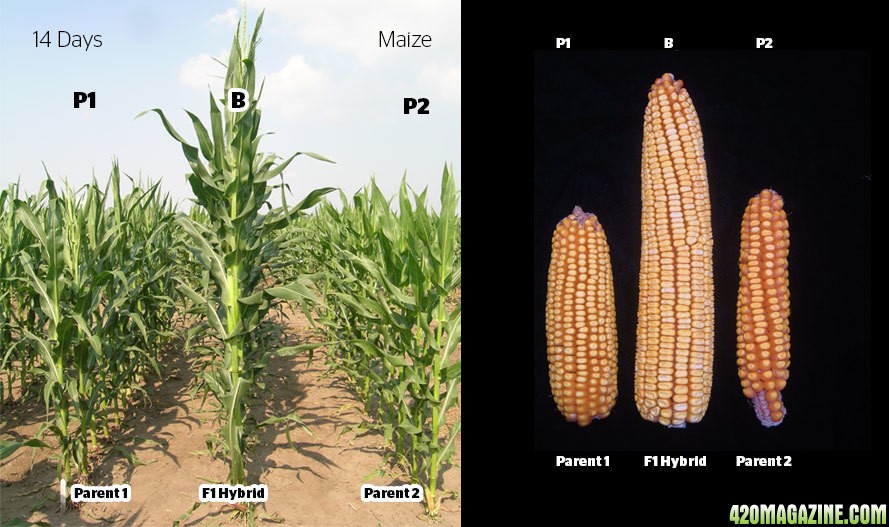Hello Denizens,
I find this whole topic of F1 Hybrid Vigour, particularly interesting.
I understand what F1 Hybrid Vigour is, as a description of its effect.
And I understand under what circumstances it will happen.
What i don't understand, is 'why' ?
Why does F1 Hybrid Vigour occur ?
The picture below, pretty much sums up the effect:

I'm sure many of you have spent plenty of time studying and working
on issues relating to plant breeding and hybridization... Perhaps you
can offer a perspective on this issue that sheds light and understanding
on the whole topic.
Thanks to those who offer a reply
have a nice day
cryptolab
I find this whole topic of F1 Hybrid Vigour, particularly interesting.
I understand what F1 Hybrid Vigour is, as a description of its effect.
And I understand under what circumstances it will happen.
What i don't understand, is 'why' ?
Why does F1 Hybrid Vigour occur ?
The picture below, pretty much sums up the effect:

I'm sure many of you have spent plenty of time studying and working
on issues relating to plant breeding and hybridization... Perhaps you
can offer a perspective on this issue that sheds light and understanding
on the whole topic.
Thanks to those who offer a reply
have a nice day
cryptolab



